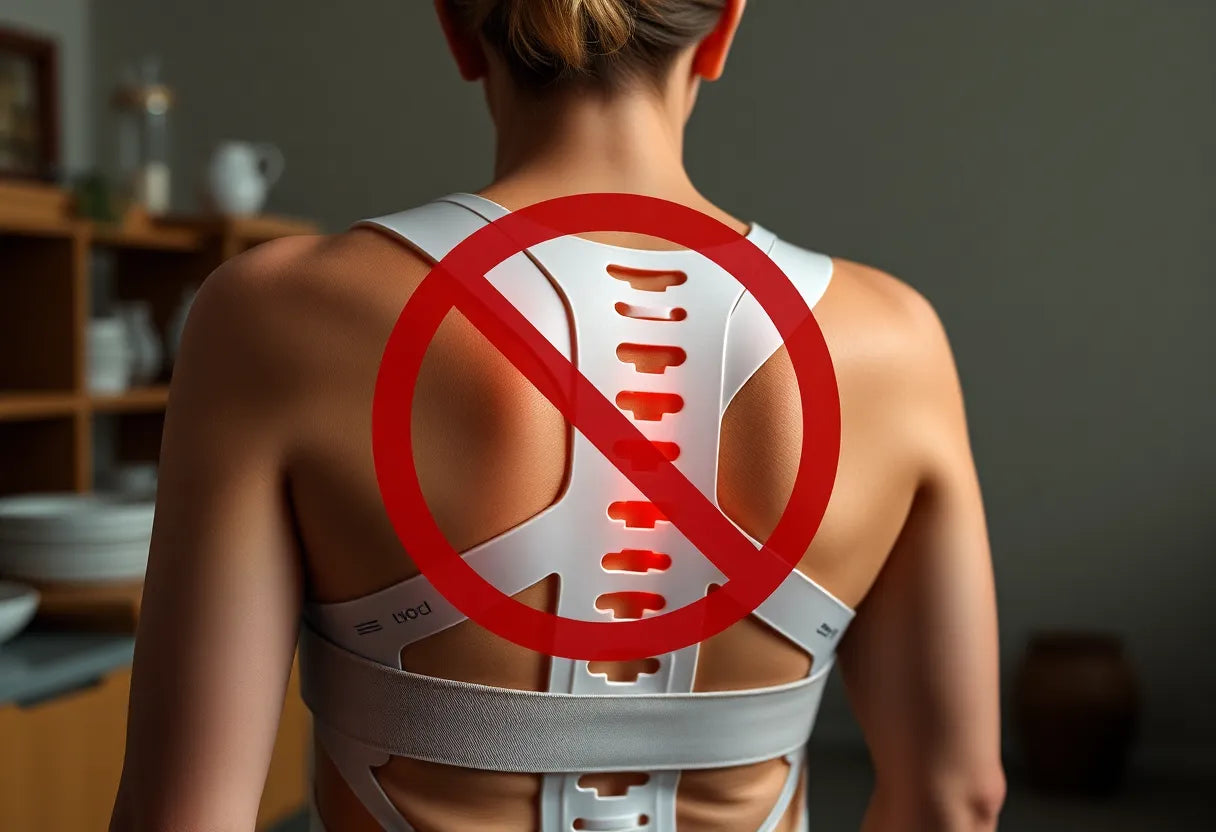Understanding the intricate relationship between the lower back and hips is crucial for anyone seeking relief from discomfort in these areas. The lower back and hips are interconnected through a complex network of muscles, tendons, and joints. When one area experiences tension or strain, it often affects the other, leading to a cycle of pain that can be challenging to break. This is a common issue, especially in today's world, where sedentary lifestyles, poor posture, and muscle imbalances are prevalent. Such factors contribute significantly to the widespread incidence of lower back and hip pain, affecting individuals of all ages and lifestyles.
importance of targeted exercises for lower back and hips
Addressing pain in the lower back and hips requires a strategic approach that combines both stretching and strengthening exercises. This dual focus is essential because it not only alleviates existing pain but also works to prevent future discomfort by enhancing flexibility and building muscle strength. Stretching helps to release tension and improve range of motion, while strengthening exercises support the muscles that stabilize the lower back and hips. Together, these exercises form a holistic approach that targets the root causes of pain, rather than just the symptoms, leading to improved mobility and overall well-being.
setting the stage for relief
This guide is designed to equip you with evidence-based exercises and practical tips that can be seamlessly integrated into your daily routine. By following the exercises outlined in this guide, you can expect to see long-term benefits, such as reduced pain intensity and increased mobility. The exercises are carefully selected to ensure they address both the lower back and hips simultaneously, maximizing their effectiveness. Whether you're dealing with chronic pain or looking to prevent future issues, this guide provides the tools you need to live a pain-free life.
In the following sections, you'll find detailed instructions and insights into specific exercises that have been proven to alleviate lower back and hip pain. By committing to these exercises and incorporating them into your regular routine, you can take proactive steps towards improving your quality of life and maintaining a healthy, active lifestyle. Stay tuned as we delve deeper into the exercises that can help unlock relief and enhance your daily comfort.
in-depth information and exercises for lower back and hips
To effectively address pain and discomfort in the lower back and hips, it's essential to incorporate a series of evidence-based exercises that focus on both stretching and strengthening these areas. These exercises not only alleviate existing discomfort but also help prevent future issues by promoting flexibility, stability, and strength. Below, we delve into specific exercises that have been proven to provide relief and improve overall mobility.
evidence-based stretching exercises
Stretching exercises play a crucial role in releasing tension and enhancing the range of motion in the lower back and hips. Here are some key stretches to incorporate into your routine:
single knee to chest stretch
To perform this stretch, lie on your back and gently pull one knee towards your chest while keeping the other leg straight. Hold the position for 20-30 seconds before switching legs. This stretch effectively releases tension in the lower back and stretches the gluteal muscles, providing relief from discomfort.
piriformis stretch
Begin by lying on your back, crossing one leg over the opposite knee. Gently pull the uncrossed leg towards your chest and hold for 30 seconds. This stretch targets the piriformis muscle, which can help reduce pressure on the sciatic nerve, alleviating pain and discomfort.
hamstring stretch
Whether standing or sitting, extend one leg and reach towards your toes while keeping your back straight. Hold the position for 20-30 seconds. Stretching the hamstrings can increase flexibility and alleviate strain on the lower back, contributing to overall pain relief.
hip abductor/adductor stretch
Sit with your legs apart and lean forward gently, maintaining a straight back. Hold this position for 20-30 seconds. This stretch improves hip mobility and reduces tension in the inner thighs, which can be beneficial for both hip and lower back health.
hip flexor stretch
Kneel on one knee and push your hips forward while keeping your back straight. Hold the stretch for 30 seconds. Hip flexors often become tight from prolonged sitting, and this stretch helps alleviate that tightness, promoting better hip and lower back function.
strengthening exercises for stability and support
In addition to stretching, strengthening exercises are vital for building the muscles that support the lower back and hips. These exercises enhance stability, reduce the risk of injury, and contribute to long-term pain relief:
bridge exercise
Lie on your back with your knees bent and lift your hips towards the ceiling. Hold briefly before lowering. Repeat 10-15 times. This exercise strengthens the glutes and lower back, providing essential support and stability.
side lying leg raise
Lie on your side and raise the top leg while keeping it straight. Lower it slowly and repeat 10-15 times on each side. This exercise targets the hip abductors, which are crucial for improving stability and supporting the lower back.
fire hydrant
Position yourself on all fours and lift one leg sideways, keeping the knee bent. Repeat 10-15 times on each side. This exercise strengthens the hip abductors and glutes, enhancing overall hip stability.
donkey kick
On all fours, kick one leg back and up, maintaining a bent knee. Repeat 10-15 times on each side. This exercise focuses on glute strength and lower back support, contributing to pain relief and improved function.
single-leg glute bridge
Perform the bridge exercise with one leg extended. Repeat 10-15 times on each side. This advanced version of the bridge intensifies the focus on individual glutes and hips, promoting balanced strength and stability.
banded walks & squats
Use a resistance band around your thighs, walking side-to-side or performing squats. Repeat for 1-2 minutes. These dynamic exercises enhance hip stability and support lower back health, making them a valuable addition to your routine.
By regularly incorporating these stretching and strengthening exercises into your daily routine, you can effectively manage and alleviate lower back and hip pain. These exercises target key muscle groups, improve flexibility, and build strength, all of which contribute to a healthier, pain-free lifestyle. In the next section, we'll explore progression strategies and answer common questions about these exercises to further support your journey to relief.

Lumbar support belt
Supports and relieves lower back pain; adjustable for comfort during daily activities.
progression and consistency in exercises
To maximize the benefits of exercises for the lower back and hips, it's essential to focus on progression and consistency. Gradually increasing the intensity and frequency of your workouts can lead to significant improvements in strength, flexibility, and overall pain relief. Start with the recommended repetitions and sets, and as your body adapts, consider increasing the duration or adding resistance to challenge your muscles further.
Consistency is key to achieving long-term results. Aim to incorporate these exercises into your routine at least three to four times a week. Regular practice not only helps in alleviating existing discomfort but also prevents future issues by maintaining muscle balance and joint mobility. Over time, you should notice reduced pain, increased range of motion, and improved overall function.
combining exercises with ergonomic aids
Enhancing your exercise routine with ergonomic aids can amplify the effectiveness of your efforts. Tools like support pillows, foam rollers, and resistance bands can provide additional support and facilitate deeper stretches. For example, using a foam roller can help release muscle knots and improve blood flow, while resistance bands add an extra layer of challenge to strengthening exercises, promoting greater muscle engagement.
Incorporating these aids into your routine can make exercises more comfortable and effective, especially for those with chronic pain or limited mobility. Always ensure that you use these tools correctly to avoid injury and consult with a healthcare professional if you're unsure about their application.

Men's Posture Shirt™ - Black
Activates muscles and supports posture; helps relieve back and shoulder pain daily.
frequently asked questions
how often should I do these exercises?
Aim for at least 3-4 times a week, depending on individual needs and fitness levels. Consistency is crucial for achieving optimal results.
when should I see a professional?
If pain persists or worsens despite regular exercise, it's important to consult a healthcare provider for a thorough evaluation and personalized guidance.
can these exercises help with sciatica?
Yes, many of these exercises can alleviate sciatic nerve pressure and improve symptoms by targeting muscles that may contribute to sciatic pain.
are these exercises suitable for beginners?
Yes, most exercises can be modified for different fitness levels. Start slowly and increase intensity as comfort allows, ensuring proper form and technique.
what are common mistakes to avoid?
Avoid forcing stretches or using incorrect form, which can lead to injury. Focus on controlled movements and proper alignment to maximize benefits and prevent harm.
By following these guidelines and incorporating the recommended exercises into your routine, you can effectively manage lower back and hip discomfort, ultimately leading to a pain-free and active lifestyle. Remember, consistency and gradual progression are key to unlocking the full potential of these exercises.
Kilder
- Smith, J. (2015). "The Relationship Between Hip and Low Back Pain." Journal of Pain Research.
- Johnson, A. (2023). "Effective Exercise Interventions for Lower Back Pain." International Journal of Sports Physical Therapy.
- Tanaka, R. (2017). "Exercise Therapy for Hip and Lower Back Pain." Tohoku Journal of Experimental Medicine.
- Harvard Health Publishing. (2022). "Stretching and Strengthening Exercises to Relieve and Prevent Lower Back Pain."
- Mayo Clinic Staff. (2023). "Back Pain: Exercises to Reduce Pain and Increase Mobility."


















